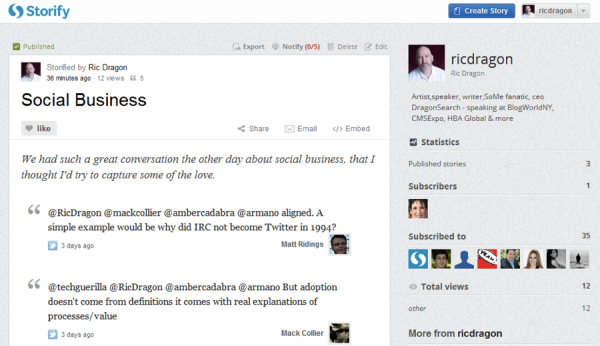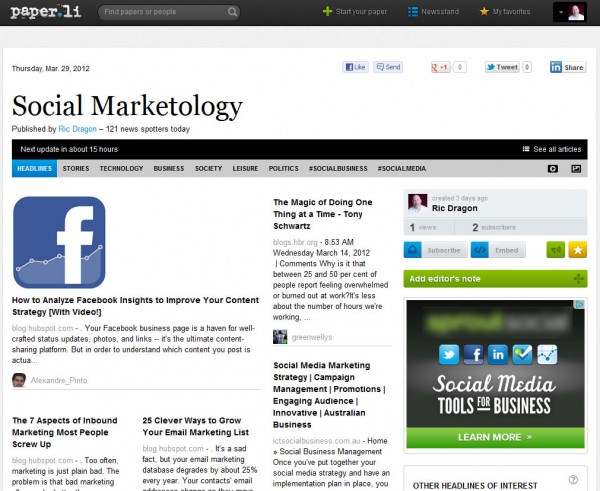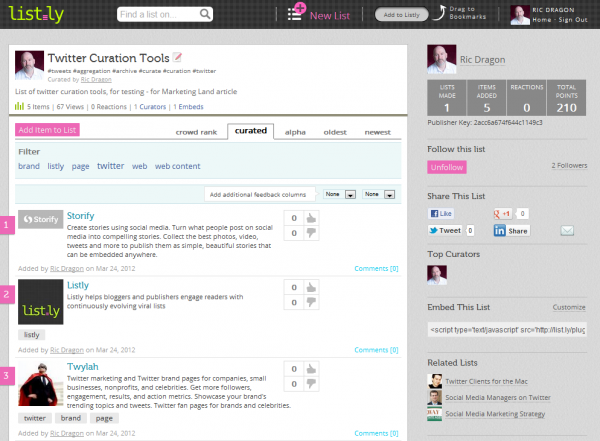How To Curate Twitter To Build Content & Engagement
Thanks to John Heywood, a writer and courtier to Henry VIII, we have classic epigrams like “Haste makes waste,” “a penny for your thought,” “beggars can’t be choosers,” and “the more the merrier.” My favorite is “you can’t have your cake and eat it, too,” which Heywood actually recorded as “Wolde ye both eate your […]
 Thanks to John Heywood, a writer and courtier to Henry VIII, we have classic epigrams like “Haste makes waste,” “a penny for your thought,” “beggars can’t be choosers,” and “the more the merrier.” My favorite is “you can’t have your cake and eat it, too,” which Heywood actually recorded as “Wolde ye both eate your cake and have your cake.”
Thanks to John Heywood, a writer and courtier to Henry VIII, we have classic epigrams like “Haste makes waste,” “a penny for your thought,” “beggars can’t be choosers,” and “the more the merrier.” My favorite is “you can’t have your cake and eat it, too,” which Heywood actually recorded as “Wolde ye both eate your cake and have your cake.”
When it comes to Twitter, I most value each of my many individual interactions (let’s call that eating my cake) — but at the same time, I’d like to continue enjoying the benefit of that content outside of the Twittersphere (that would be having my cake).
While Twitter maintains that they don’t delete tweets, trying to find older posts can be a challenge.
By curating and aggregating your Twitter content outside of Twitter, not only will you be able to more easily find that pithy bit you tweeted a few months ago, but you’ll also be able to repurpose that content into narrative threads, and use it as a springboard for even more engagement.
Ongoing association of ideas and words relevant to the brand is another bonus that can, in turn, have a significant impact on search engine optimization (SEO).
A Little Background On SEO
The algorithms used by search engines are in constant flux. One piece of the SEO mix has been back links — links from another website to your own. Preferably, the anchor text in any one of those backlinks would include words for which you wish to be found in search.
Of course, like any aspect of SEO, as quickly as people learn how to game the system, search engineers emphasize other factors. Many believe that not only the content, but the entire context of a page with an originating link can influence the relevance of a target — perhaps even the pages to which that page links — creating a large web of relevance.
There was a brief golden age when there was evidence that links from Twitter were helping sites to show up more prominently in search results. The Twitter and Google agreement in which Google indexed Twitter ended, and alas, at this time, Twitter only provides search results for the past seven days.
There might be some satisfaction in knowing that your posts will end up in the Library of Congress someday, but if you want the benefit of backlinks, publishing your tweets outside of Twitter is the answer.
Aggregation And Curation
I spent the last couple weeks deep diving into many third party tools that syndicate, aggregate, or otherwise curate tweets. Three major attributes surfaced:
- Manual curation versus machine curation (using hash tags or key words).
- Ability to publish to your own website or to a third-party site.
- Sharability — are there aspects of the tool that encourage sharing?
Storify
Storify allows you to create themed “stories,” or aggregations of content. You can easily drag and drop stories, or use a toolbar button to add content, not only from Twitter, but from other social platforms as well. You can also edit the header and customize introductory text.
Storify provides code to embed content onto other sites, but if you use that method, the content won’t be indexed by the search engines in the same way. Storify has been working on an export feature that promises to export to a self-hosted WordPress blog, Drupal, or Tumblr – but at the time of this writing, I was unable to export to my own self-hosted WordPress blog.
Twylah
While Storify allows you to aggregate content from all over the web, Twylah was developed specifically to extend Twitter. And unlike Storify, Twylah is an example of machine-based curation. You can specify which tags should have prominence or even visibility, but the heavy lifting of choosing content is done automatically.
Like the other curation tools mentioned here, having your tweets preserved along with all those links back to your website is useful, but you might get more value from that content if you could host it on your own site. Twylah’s answer to that is that they will host your Twylah page on your special domain. While that can’t be your website domain, it can be a CNAME, such as “tweets.mydomain.com.”
According to the Twylah founders, they are about to release several widgets that will allow users to show top tweets, or more wonderfully, tweets that might relate to a specific blog post.
Scoop.it
Scoop.it, like Storify, is another curation tool intended for all types of content on the web. In order to add a tweet, you must click on the tweet details link to arrive at the page dedicated to that tweet , and then click the “scoop.it” button. The bonus to Scoop.it is that it suggests content for inclusion in your curated topic.
Scoop.it provides both widgets and RSS feeds as means for sharing on your own website.
Paper.li
When Paper.li hit Twitter, it wasn’t easy to miss. All of a sudden, there were countless “so and so dailies” in the Twitter stream. Paper.li allows you to create a daily or weekly “newspaper” of content originating with certain Twitter users, you and the people you follow, and/or hashtags. You can also manually add content using their toolbar button. While these digital periodicals are not permanent, and thus don’t create a lot of SEO value, the Paper.li tool and interface are user friendly.
List.ly
List.ly enables users to easily make lists of just about any web content, including, most recently, tweets. After installing the List.ly button to your tool bar, simply go into the “details” view of a tweet, and click the button. With this tool, it’s simple to create, say, a list of the, funniest, most inspirational, or most relevant to a topic tweets (let your imagination guide you) that you’ve seen this week.
Along with other features, List.ly allows you to make your list collaborative, or for you to move items up and down in the list — but most important, from an SEO point of view, is an available WordPress plugin to insert lists into your blog posts not as javascript (which isn’t read by the Googlebot) but as actual text.
Twitter Terms Of Service
It’s worth noting that according to Twitter’s Terms of Service (TOS), you retain rights to any content you submit, post or display on or through Twitter. “Except as permitted through the Services (or these Terms), you have to use the Twitter API if you want to reproduce, modify, create derivative works, distribute, sell, transfer, publicly display, publicly perform, transmit, or otherwise use the Content or Services.”
You might focus on curating your own content, or even that of others, although copyright issues are worth considering. Many writers have suggested that tweets simply aren’t protected by copyright. Creating a curated batch of tweets, however, hasn’t been tested. For instance, if I create a whole web page dedicated to the tweets of Danny Sullivan, could those aggregated bunch of tweets be considered text worthy of copyright protection?
Curation has proven to be a fundamental aspect of social media. For brands, it’s an activity that not only helps to improve website SEO and increase engagement, but also provides an easy way for the brand to speak its passion points. That might just be the frosting on the cake.
Featured photo courtesy of http://www.bakerella.com
Contributing authors are invited to create content for MarTech and are chosen for their expertise and contribution to the search community. Our contributors work under the oversight of the editorial staff and contributions are checked for quality and relevance to our readers. MarTech is owned by Semrush. Contributor was not asked to make any direct or indirect mentions of Semrush. The opinions they express are their own.
Related stories




